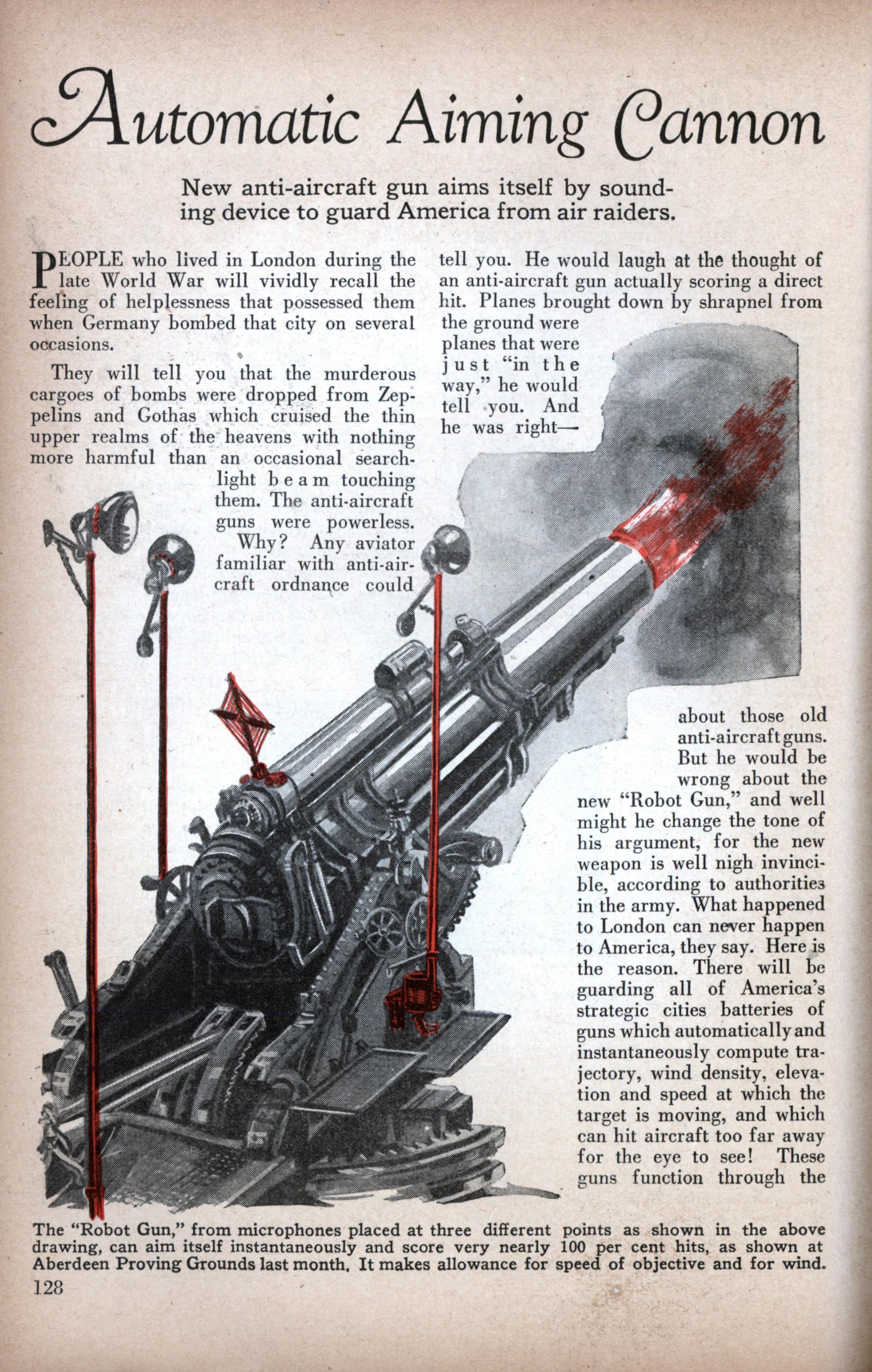We’ve longed looked for ways to automate killing, even in those days when computers were more often referred to as “electronic brains” or “mechanical minds.” An early attempt at push-button warfare–a “robot gun”–developed by the U.S. between world wars was the subject of an article in the October 5, 1928 Brooklyn Daily Eagle. An excerpt:
“Aberdeen Proving Grounds, Md.–Greatest among the marvels of a mechanized army demonstrated here yesterday for the Army Ordnance Administration is a ‘mechanical mind’ produced in the Sperry plants in Brooklyn.
Following a day which was replete with spectacular demonstrations of new engines of war the ‘mechanical mind,’ which is technically known as a ‘data computer,’ located an ‘enemy’ airplane in the black night skies, spotted it almost instantly with the beam of powerful searchlight and kept a battery of four three-inch guns trained on the airplane and then with the press of a button the whole battery of anti-aircraft artillery opened fire and blew the trailing target to bits.
Not a Hand Touched It
Not a hand touched the searchlight which spotted the airplane and not a hand was touched to the three-inch guns in the anti-aircraft gun battery to sight them. The ‘mechanical mind’ did all this.
Ordnance experts declared this device the outstanding feature of the show. ‘It is certainly a military robot,’ said one of them.
The senses of this mechanical mind are embodied in a very sensitive syntonic oscillator, which had direction determining and vague finding powers. What this syntonic oscillator detects is greatly amplified after the manner of radio sets and its findings, which are expressed in electrical signals, are fed to a ‘comparator.’ This part of the apparatus is a mathematical marvel. It takes the reading given it for direction and distance from the oscillator without any effect on the correctness of the aim given.”

